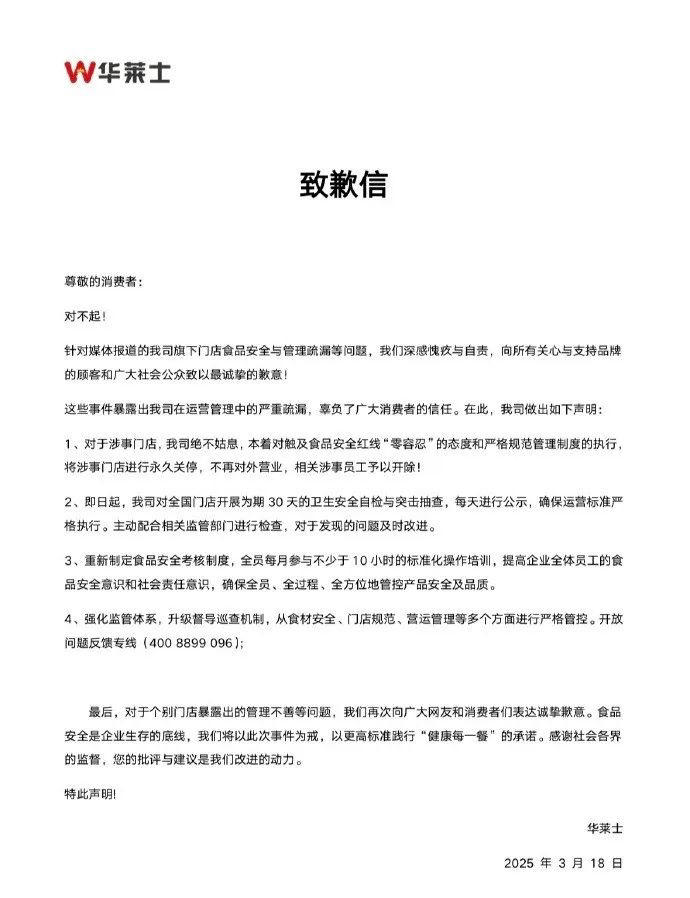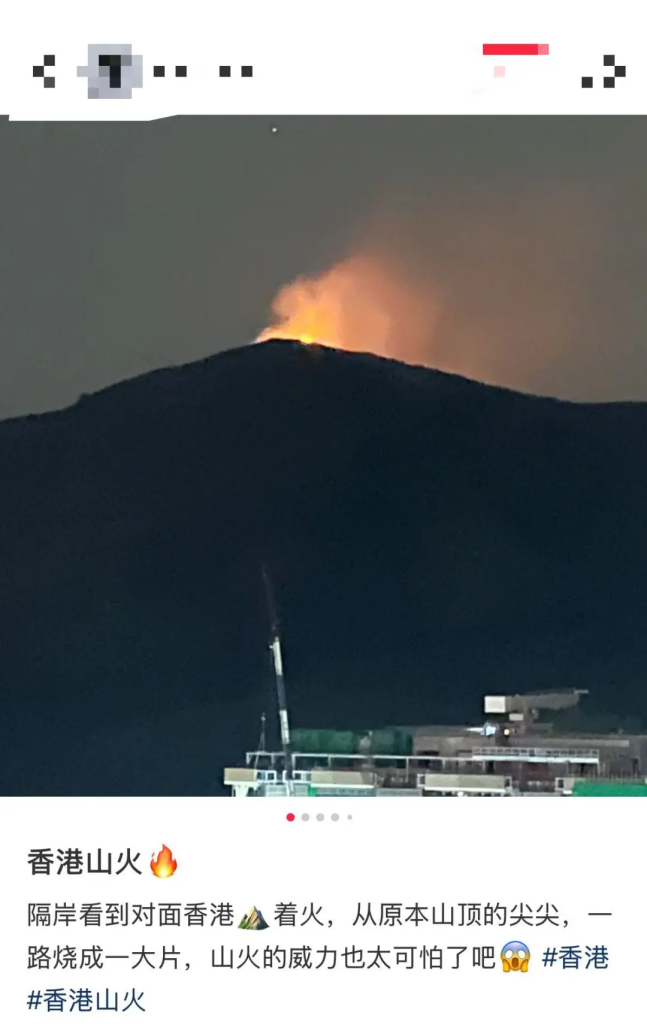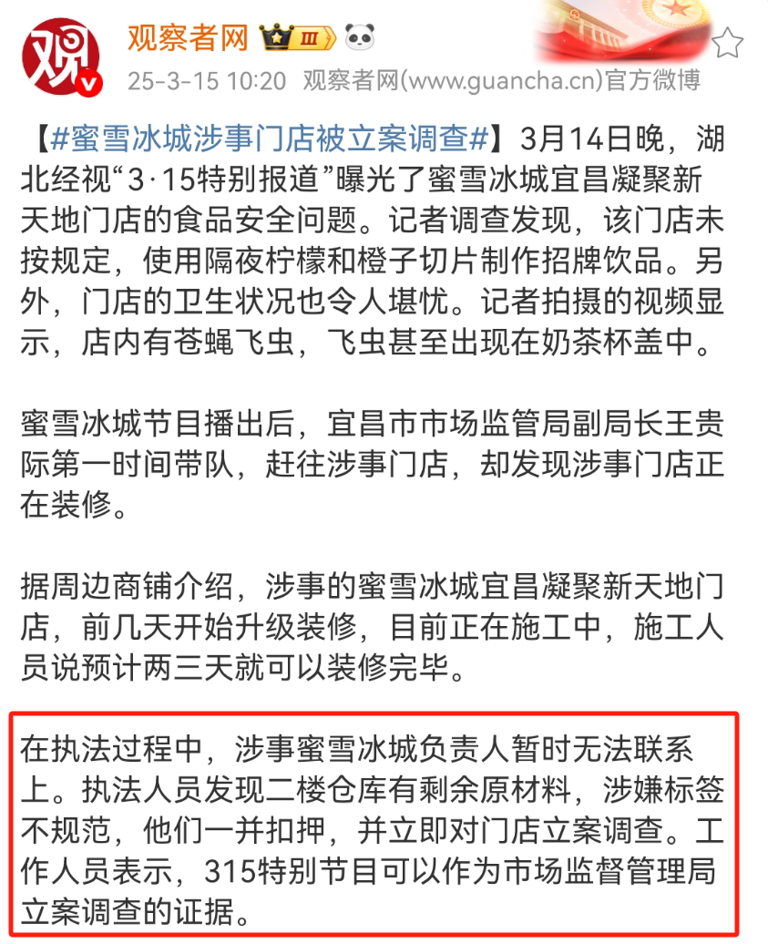In the Tarim Basin in southern Xinjiang, there is a vast land known as the “Sea of Death”. Extreme drought and human activity have led to a 40-year ecological tragedy – the drying up of Lake Taitema.
However, after 23 years of scientific management and a total of 9 billion cubic meters of ecological water transfer, this depleted lake has miraculously been reborn and has become a model of global ecological restoration.
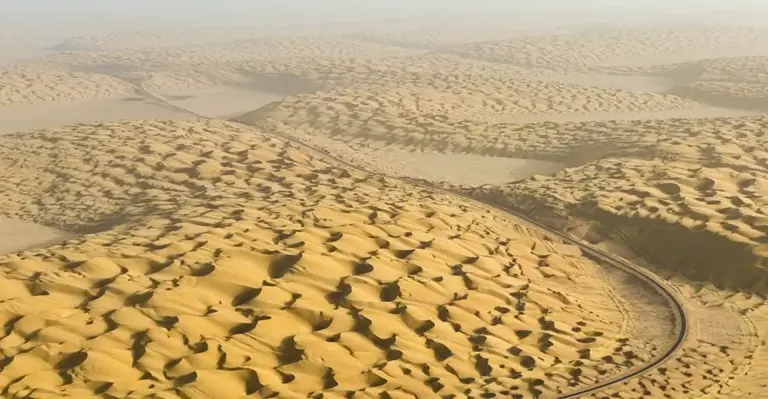
In the 7th century B.C., Lake Taitema existed as the tail lake of the Tarim and Cherchen rivers. For 1,500 years, it was not only the “transit station” of the Tarim River system, but also connected to Lop Nur through Kara and Shunhu Lake, forming a water network system that runs through the Tarim Basin.
During the Tang Dynasty, the lake expanded to an all-time high of 11 Poyang lakes, and its shoreline meandered like the Great Green Wall, separating the two deserts 50 kilometers away.
At that time, the poplar forest on the lakeside covered the sky and the sun, 134 species of birds inhabited in the red willow bushes, and the population density of Tarim schizophrenia reached 3.2 per cubic meter.

In 1921, the lower reaches of the Tarim River were diverted to the Peacock River to the north, and Lake Taitema suffered its first water crisis. Fortunately, the completion of the Tarim Dam in 1952 forced the river back to its former path, and the lake was able to maintain its surface at 183 square kilometres.
Surveys in 1959 showed that there were still 400 kilometers of poplar forest along the shore, and the groundwater level was only 2 meters. But by this time the crisis was brewing – arable land in the Tarim River basin had surged from 4.8 million mu in 1950 to 13.54 million mu in 1970, and water consumption had skyrocketed by 300 percent upstream.

In 1972, the damming project of the Daxihaizi Reservoir was completed, which became the last straw that broke the camel’s back. 363 kilometers of the lower reaches of the Tarim River have been cut off, and the average annual water flow has plummeted from 950 million cubic meters to 70 million cubic meters.
Lake Taitema, which has lost its water source, has shrunk rapidly under the scorching heat of 2,920 mm of evaporation per year: in1974 the lake shrank to 66 square kilometres, in 1980 it degenerated into a dotted salt marsh, and in 1983 it dried up completely.
Nature uses the most cruel way to teach blind development a heavy lesson.
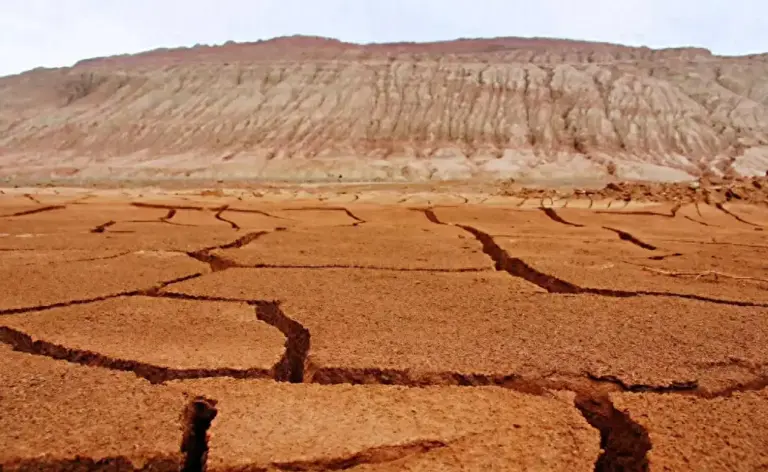
The drying up of Lake Taitema is like the first domino that has toppled the desert ecosystem. When this life-sustaining body of water disappeared, a catastrophic cascade across biological, climatic, and geographical contagion swept across the Tarim Basin.
1. Collapse of vegetation systems
The disappearance of the lake directly caused the groundwater level to plummet from 2 meters to 12 meters, exceeding the maximum water absorption depth of the poplar forest root system (8 meters). This “Great Green Wall”, which once covered 400 kilometers, has died 70% in just 10 years.
According to the Xinjiang Institute of Ecology of the Chinese Academy of Sciences, the annual mortality rate of Populus euphratica soared from 3% in 1975 to 21% in 1985, and the average height of the remaining trees shrank by 4.2 meters.
Sand-fixing plants such as red willow and saxon have disappeared in patches, the surface vegetation coverage rate has plummeted from 38% to 7%, and the salinized land area has expanded to 1,200 square kilometers. What’s more fatal is that the regional air humidity drops by 12% due to the loss of plant transpiration, forming a vicious circle of “drying up-vegetation death-more drought”.
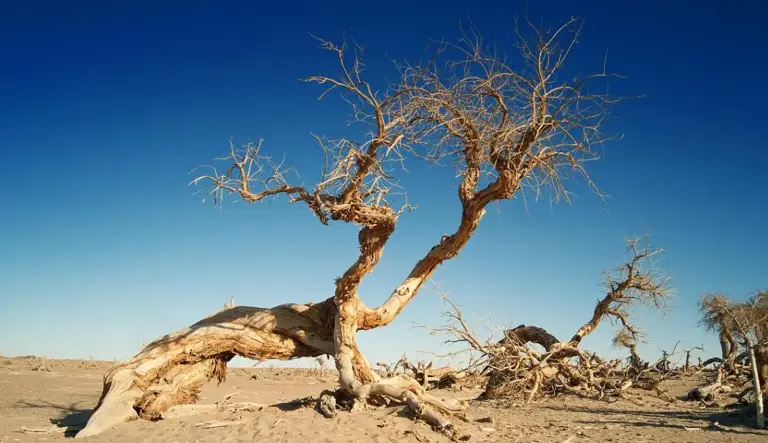
2. The annihilation of the animal kingdom
The collapse of aquatic ecosystems leads to the breakdown of biological chains. The lake’s endemic Tarim schizophrenia became functionally extinct in 1980, and fishermen recall: “The last fish caught was only the size of a palm, and its eyes bulged out as if it were complaining”.
The population of waterbirds has plummeted by 98%, and the migration routes of swans and egrets have been forced to move 300 kilometers north. Terrestrial fauna also suffered: the density of Tarim rabbits fell from 12 to 0.7 per square kilometre, and the range of goose-throated antelopes shrank by 85 percent.
The most distressing thing is that in 1987, the scientific expedition team found 17 wild camel bones in the middle of the lake – this desert spirit went to the place of death in search of water.
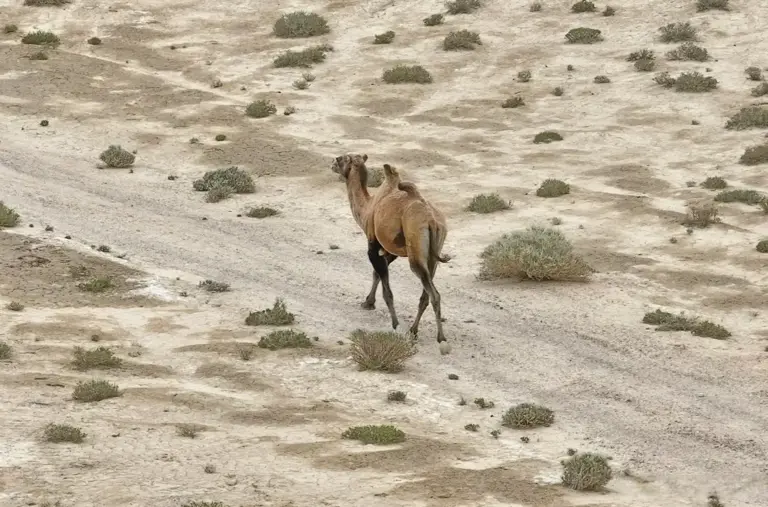
3. The frenzy of the desert devouring
After losing the vegetation barrier, the Taklamakan Desert and the Kumtag Desert advanced in opposite directions at a rate of 5 meters per year. Satellite imagery shows that in 1995 only 11 kilometres remained at the nearest of the two deserts. Shifting sand has buried National Highway 218 on the eastern shore of Lake Taitma, and Abuliz Kurban, a road maintenance worker, said: “I just cleared the sand yesterday, and when I opened the door this morning, the sand wall blocked the windowsill again.”
The 315 households in Ruoqiang County were forced to relocate three times, and the ruins of Milan Town were eroded by 60% of quicksand in 20 years. To make matters worse, 350 million tonnes of sand and dust are transported east through the Tarim Wind Corridor every year, and dust particles from Lake Taitema have been detected in Beijing, 2,000 kilometers away.

4. The cost of human society
Ecological catastrophe eventually reverses human civilization. The salinity of agricultural irrigation water in Yingsu Village increased from 1.2 g/L to 4.8 g/L, the yield of cotton per mu in the downstream plummeted by 64%, and 340,000 mu of cultivated land was forced to abandon farming. The Tarim Oilfield has to spend an additional 230 million yuan a year on sand control and cementing, and the oil pipeline needs to be rerouted 1.2 kilometers a year due to the movement of sand dunes.
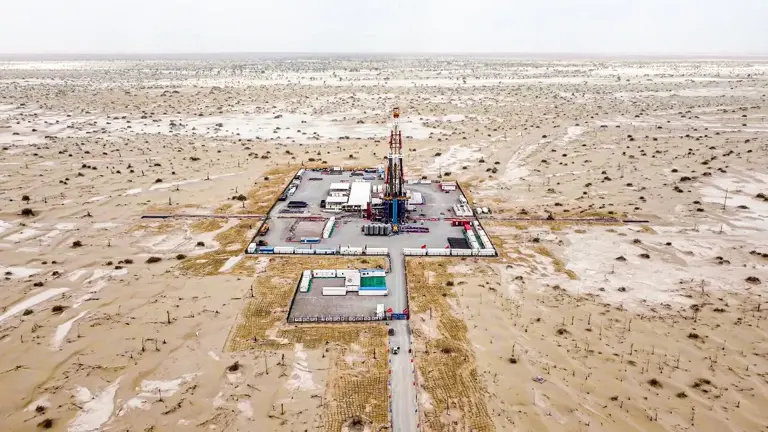
To regenerate Lake Taitema, which has been dry for 40 years, is by no means a simple “diversion of water to irrigate the lake”. This multidisciplinary and cross-regional mega project embodies the wisdom of Chinese scientists and builders, and creates a new paradigm of ecological governance in arid areas.
1. Technical tackling
The water transmission line needs to cross 363 kilometers of desert Gobi, and engineers face three “death barriers”:
Flowing sand dunes engulf the channel: Basalt fiber reinforced concrete technology is used to increase the wind erosion resistance of the channel by 4 times. In the active section of the dunes, 600 grass grid sand barriers are laid every kilometer to form a three-dimensional protection system of “solid-transportation combination”.

High-temperature evaporation loss: Developed a “honeycomb shade net” to cover key aqueduct sections, and combined with the nighttime water conveyance strategy, the evaporation rate was reduced from 8 mm to 2.3 mm per day.
The Chinese Academy of Sciences team also innovated the “capillary infiltration irrigation method”, laying a biochar layer at the bottom of the river channel, so that water can slowly infiltrate through soil capillaries, and the vegetation restoration efficiency is increased by 70%.
Ecological flow control: Establish a “digital twin basin” system, collect data in real time through 132 hydrological monitoring stations, and the AI model can predict the effect of water delivery 72 hours in advance. In the 2021 flood season, 380 million cubic meters of flood water was converted into ecological water under the precise control of the system, which is equivalent to four times that of the same period in previous years.
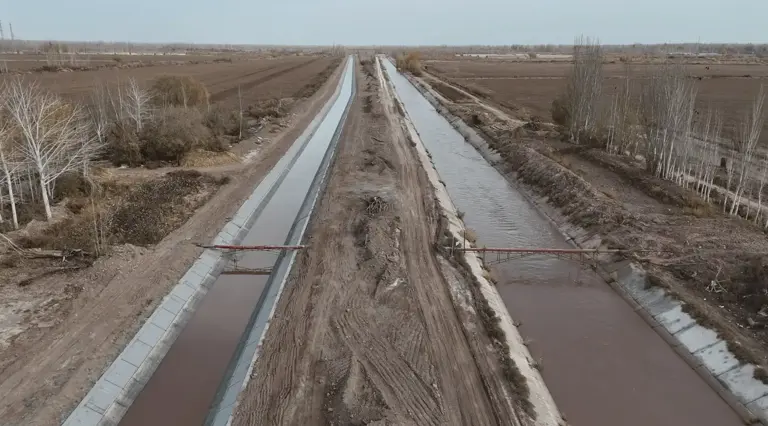
2. Ecological scheduling
As the “commander-in-chief”, the Daxi Haizi Reservoir needs to find a delicate balance between agricultural irrigation and ecological water replenishment every year:
Dynamic water distribution mechanism: According to the crop growth cycle, April to June is set as the “ecological window period”, and 60% of the annual ecological water volume is released in a concentrated manner. When the cotton field reaches maturity, the proportion of water conveyed is increased to 80%.
Dual water source linkage: In 2022, the Cherchen River water diversion project will be launched, and 43 kilometers of water conveyance tunnels will be completed. When the water from the Tarim River is insufficient, the Cherchen River can be supplied urgently, forming a stable pattern of “two rivers helping each other”. Hydrological data show that the dual-source model has increased the ecological water supply guarantee rate from 67% to 92%.
Stepped infiltration: Abandon the traditional flood irrigation and adopt the hierarchical water conveyance strategy of “main river channel first and tributary first”. The water flow is advanced at a speed of 1.2 kilometers per day, allowing the dry soil to gradually absorb and soften water, avoiding the instantaneous infiltration and loss of water.

This scientific breakthrough, which lasted for 23 years, set a number of world records: the longest ecological water transfer distance (523 km), the largest desert vegetation restoration area (1,843 square kilometers), and the first double desert barrier project.
The Tarim River has proven that humanity is fully capable of reversing ecological disasters, and the key lies in the willingness to pay wisdom and patience. When 9 billion cubic meters of clean water finally awakens the sleeping Lake Taitema, it is not only a triumph of technology, but also a profound reconstruction of the relationship between man and nature.
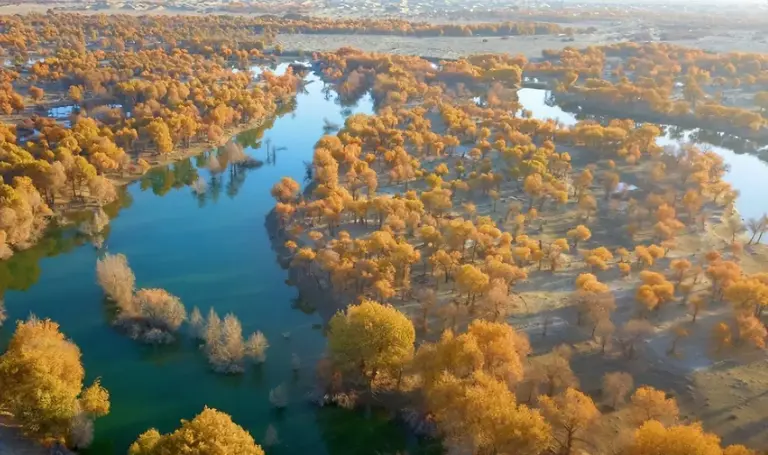

 Entering China
Entering China


